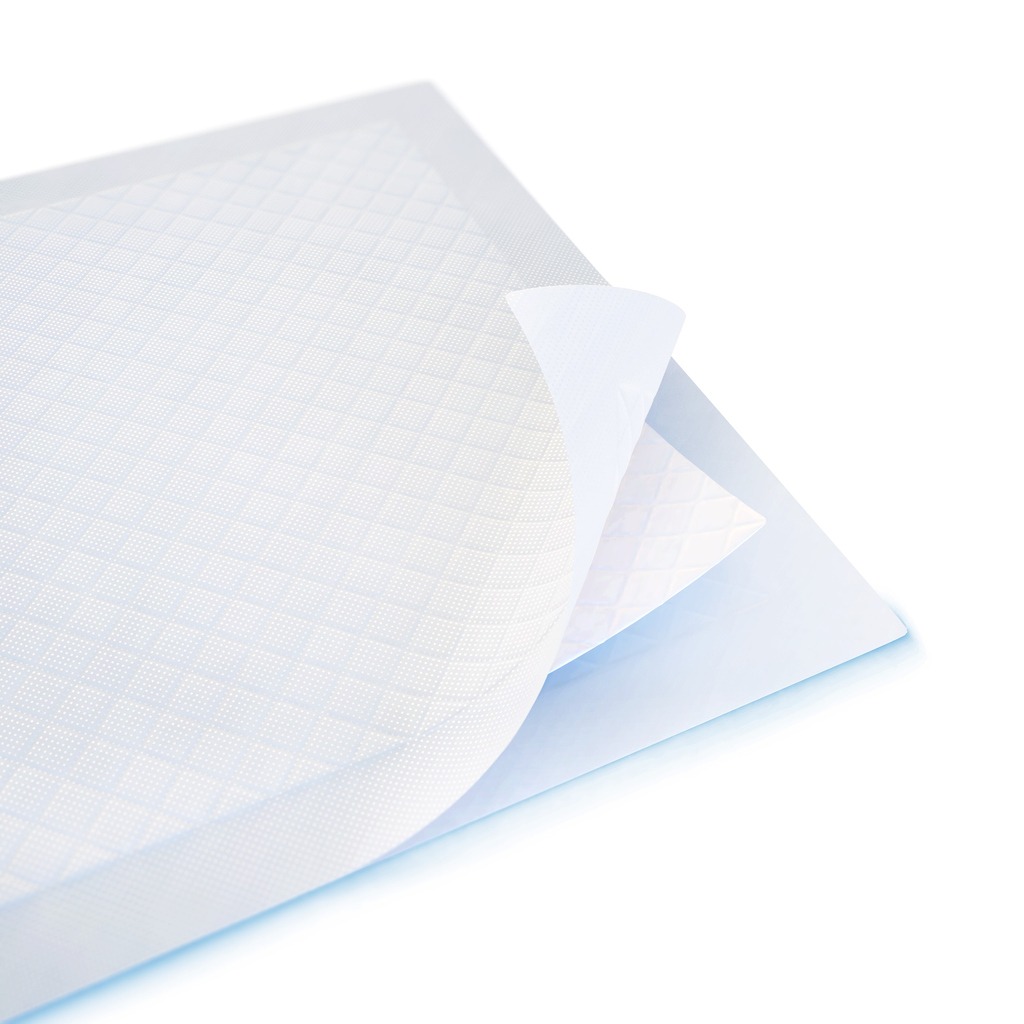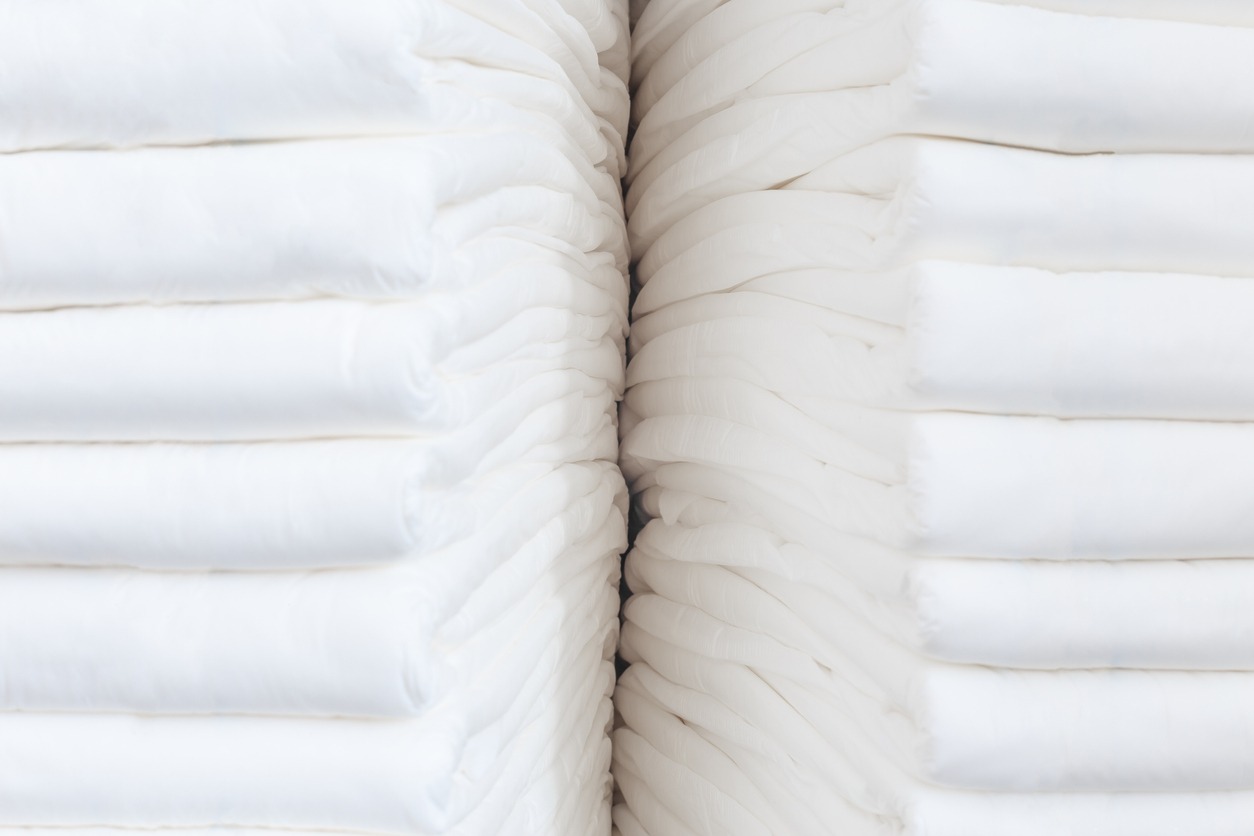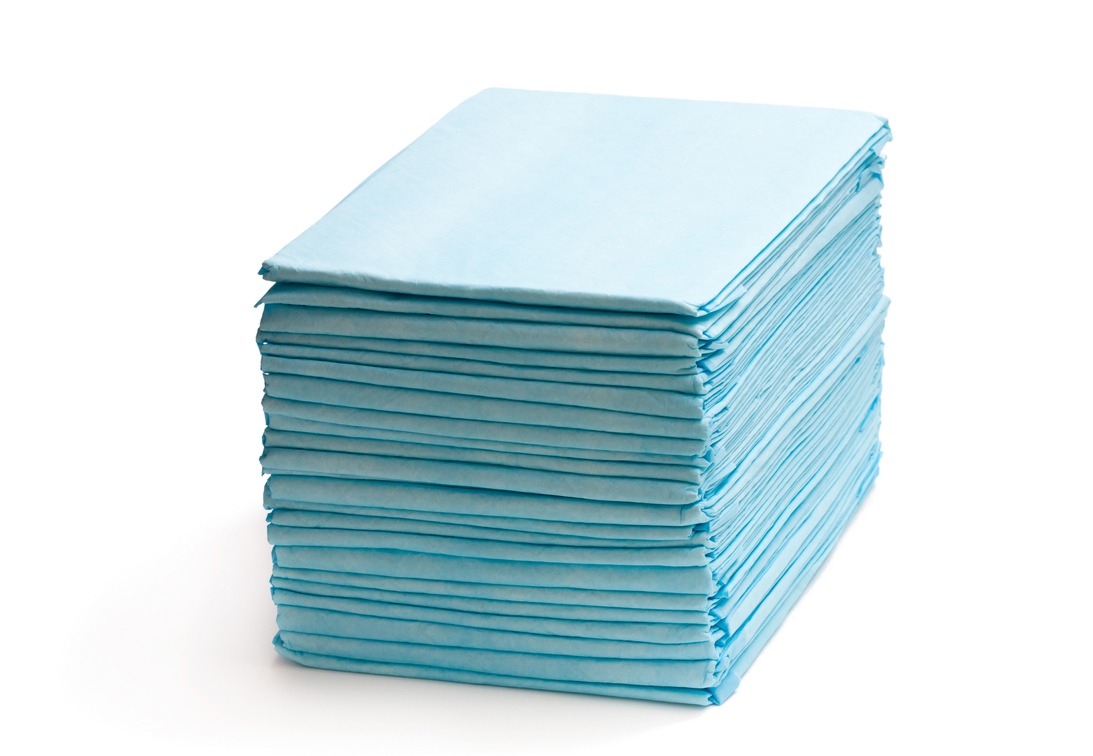A lot of seniors experience urinary incontinence or a loss of bladder control. This can be due to an underlying medical condition, such as diabetes, menopause, an enlarged prostate, or certain medications. Around 25 million people in the United States experience bladder leakage daily, based on the National Association for Continence.[1]
Most of the time, incontinence is accompanied by embarrassment. If you are taking care of a senior loved one or patient, and he or she is struggling with incontinence, they do not have to worry as there are a lot of products that are made to make living with this condition easier. One of the best examples is the use of overnight bed pads, which can help them keep their sleep space dry and clean overnight.
Incontinence pads are a possible option that may help you safeguard your bed linens and mattress, whether you have frequent wake-ups or the need to change the sheets. These pads are traditionally placed over the sheets to keep fluids from reaching the sheets and mattress. If you are looking into buying bed pads for seniors but can’t decide what to get, we are here to help you. In this post, we are giving you a guide to picking bed pads for seniors.
What are Bed Pads?
Bed pads are commonly used to protect the mattress or sheets from any mishaps. They absorb urine that leaks overnight, protecting the mattress or other surfaces. There are also some people that use bed pads on wheelchair seats and car seats. They are also usually used in addition to incontinence underwear. These pads are either washable or disposable and are available in different sizes, depending on your needs.[1]
When and Why are Bed Pads Used?
Bed pads are used anytime you are worried that your bed linens may be soiled due to incontinence or bleeding. Below are some examples of where they are usually used:[2]
- For children who have frequent bedwetting episodes.
- After a surgical procedure, such as a prostatectomy.
- During the recovery period after childbirth.
- For patients who have periods of bladder or bowel incontinence.
There are many conditions that may result in incontinence, such as post-stroke and dementia. To keep linens clean, the use of bed pads can help.[2]
Things to Consider When Choosing Bed Pads
When you are choosing a bed pad for seniors, there are some key factors that you need to consider. Below are some of them:
Type of Bed Pad
When it comes to bed pads for seniors, there are two main types to choose from. These are either disposable or washable. The one you choose should depend on what is the most convenient for you. Try to consider how frequently you can do laundry. If you can’t do it frequently, then you can opt for a disposable bed pad. But if you want to save money, going with washable ones is a great choice.
Size
It is also important to consider the size of the bed pad you are going to buy. This determines how much coverage you have. For instance, if the bed is small or you only need a small area to cover, choosing a pad that is 18 inches by 24 inches may work for you. However, if the bed is larger, then getting a bed pad that is 34 inches by 36 inches is a great choice. However, you need to keep in mind that bed pad prices also tend to increase with size.[1]
Special Features
When choosing a bed pad for seniors, you also need to pay attention to three features which are absorbency, odor control, and comfort.
- Absorbency: The product should note how much liquid it can hold. Most bed pads are able to hold 1200 to 1,500 milliliters of liquid. If the patient is a heavy leaker, then choosing a bed pad that has a higher absorbency level is a must.
- Odor Control: If your concern is the scent, then it is important to check whether a bed pad provides built-in odor control. A lot of products consider this as a special feature.
- Comfort: The comfort level of a bed pad is important, particularly when you are using a product every night. Washable bed pads are usually softer compared to disposable ones. A lot of them feature a quilted top that will not cause irritation to the skin.
Cost
Bed pads are mostly sold in packs and can be bought in stores and online. As mentioned earlier, the price of bed pads may increase depending on the size that you are going to choose. Disposable pads may also cost more compared to washable ones in the long run. Before buying, make sure that you plan and set your budget on how much you want to spend on a bed pad.[1]
The Different Types of Bed Pads
As mentioned earlier, the type of bed pad is one of the most important choices that you are going to make. To help you, below is more information about them, along with a few product examples to guide you in picking the best one for your needs:
Washable Bed Pads
These are also called reusable bed pads. They usually provide better protection compared to disposable ones. They are waterproof pads that are reliable and do not tear. These pads can stay in place overnight and are less likely to slip around compared to some disposable pads. Most of the time, washable bed pads are made of cloth and are comfortable to use. They commonly have a few layers of protection built in, such as a fast-drying top layer to make sure that the patient stays dry while they are lying on it.[1]
Below are some examples of washable bed pads to help you choose:
- Utopia Bedding Waterproof Incontinence Pads: These bed pads are thin but are super absorbent. They are made of polyester and can provide effective fluid control. They are washable and can lie flat on the bed without bunchy. It is a heavyweight barrier that protects the bed linen to avoid numerous sheet changes. It has four layers of protection and can absorb up to 6 cups of liquid or 1,600 cc.
- IMPROVIA® Washable Pads: This reusable bed pad can provide fast and effective fluid absorption. It is made of polyester fabric, and it can quickly dry in about ten minutes, even when in use. It is washable up to 500 times. It will keep the skin safe from wetness and rashes. It has a super-soft texture that is highly recommended for seniors.
- CoolShields Bed Pad: This bed pad has a large water absorption capacity and a strong waterproof barrier. It features breathable and no-piling cotton fabrics, which provides more comfort. It also has a non-slip bottom, making it stable and softer than those rubber bottoms. It can be washed up to 200 times and still maintain great waterproof performance.
Disposable Bed Pads
These bed pads are designed for one-time use. They are usually more expensive over time compared to washable bed pads. However, if you only need a bed pad for a short period, like a few weeks after surgery, then disposable bed pads might work for you.
Most of them offer three or four levels of protection. Oftentimes, the top layer of the pad is made of a soft, quilted material that wicks fluid from the skin while the following later traps urine through an absorbent gel. The bottom part is often made of plastic or vinyl to make sure the liquid does not leak into the bed.[1]
Below are some examples of disposable bed pads to help you choose:
- Unifree Disposable Bed Pads: These disposable bed pads are made using globally sourced high-quality materials. They are comfortable and safe to be used. The pads feature a soft top layer, and it is 100% latex-free. It does not contain irritating chemicals, dyes, or salts. It is super absorbent and can lock in fluid fast. These bed pads can also prevent odor and keep liquid away from the skin.
- Chucks Pads Disposable Bed Pads: These are absorbent bed pads that can protect your bedding and sheets from the uncontrolled bladder or urinary problems. They are designed with premium polymer layers that absorb liquids, urine, or accidents faster. It locks away the liquid to help control wetness and odor.
- Ultra-Absorbent Disposable Bed Pads: These are heavy-duty and medical-grade bed pads that help lock away moisture and odors from up to 1,500 ml of liquid. It has an extra-large size to maximize the surface area of the bed for increased protection. They also have adhesive backing strips to hold pads in place and avoid slipping and scrunching. The top part of the pads is soft-quilted for additional comfort.
Tips on Using and Changing Bed Pads
One of the common issues encountered by those who use bed pads is that they tend to slip to the upper or middle back of the bed and not where they need to be, which is under the buttocks. But there are some techniques that you can try in order to keep them in place. Below are some of them:[2]
- Place the pad in a lower position in the bed as it only goes higher and not lower.
- Any time you or a loved one gets up, try to pull the pad back down.
- Place double pads if needed. For instance, if you know there will be a nocturnal accident, laying two pads in advance will allow you to remove the top one, throw it away, and have a backup one available.
- Put one pad in a horizontal position and another pad in a vertical position. This will ensure that the position will be a catch-all for any messes.
Changing bed pads can also be challenging, particularly if your loved one or patient is unable to get out of bed easily. Below are some steps that you can follow to change bed pads:[2]
- Turn the patient to one side of the bed.
- Roll up the bed pad halfway until it is rolled along the length of the patient, slightly tucked underneath them.
- Put the new pad halfway on the bed and roll it to meet the part under the patient.
- Turn the patient over the rolled edges of both pads onto their other side and the clean pad.
- Finish rolling up the dirty pad and remove it.
- Continue rolling the new bed pad in place.
Alternatives to Incontinence Bed Pads
When it comes to protecting your bed and keeping it dry, an incontinence pad or bed pad is not the only option. Below are some alternatives to bed pads:[2]
Wearable Pads: These are pads that fit in underwear and are made specifically for incontinence.
Incontinence Underwear: These are underwear, like briefs, that are made from absorbent fabric.
Waterproof Mattress Covers: These are water-repellant mattress covers that are made like a fitted sheet. They fully enclose the mattress to repel liquid or moisture.
Disposable Fitted Sheets: These are fitted sheets that cover the whole bed. The top fitted sheet layer can be peeled away to reveal another bed pad.
Conclusion
The use of bed pads is indeed helpful for seniors, particularly those who have certain health conditions that require them to remain in bed most of the time. Incontinence bed pads can surely be one of the many strategies that you can use to protect the bed and sheets from episodes of incontinence. These pads can be used alone or in combination with other products in order to help your loved one. We hope this post helped you learn more about picking bed pads for seniors.
References
[1] Haupt, A., & Booth, J. (2023, January 4). Best bed pads of 2023. Forbes. Retrieved January 12, 2023, from https://www.forbes.com/health/healthy-aging/best-bed-pads/
[2] Nall, R. (2021, October 29). 7 best incontinence bed pads according to a nurse. Healthline. Retrieved January 12, 2023, from https://www.healthline.com/health/incontience-bed-pads#how-we-chose




